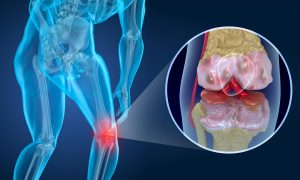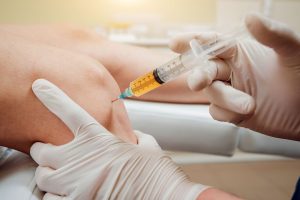Introduction
Knee arthritis, a condition affecting millions worldwide, often leads individuals to explore various treatment options to alleviate pain and improve mobility. Among these options, Knee Arthritis Shots Safe? have gained attention for their potential to provide relief. However, before undergoing such treatment, it’s crucial to understand their safety and efficacy. Explore More About (Poliovirus in Waste Water)

Understanding Knee Arthritis Shots
Knee arthritis shots, also known as intra-articular injections, involve the direct delivery of medication into the affected joint. The most common types of injections for knee arthritis include corticosteroids, hyaluronic acid, and platelet-rich plasma (PRP).
Corticosteroids
Corticosteroid injections are anti-inflammatory medications that can help reduce pain and swelling in the knee joint. These shots work by suppressing the immune response and decreasing inflammation within the joint. While they can provide short-term relief, their long-term efficacy remains a topic of debate.
Hyaluronic Acid
Hyaluronic acid injections, also known as viscosupplementation, aim to improve the lubrication and shock-absorbing properties of the knee joint. This substance is naturally found in the synovial fluid, which acts as a cushion and lubricant within the joint. While some studies suggest benefits in pain reduction and improved function, results vary among individuals.
Platelet-Rich Plasma (PRP)
Platelet-rich plasma (PRP) injections involve the extraction and concentration of platelets from the patient’s blood, which are then injected into the knee joint. Platelets contain growth factors that promote tissue repair and regeneration. While PRP therapy shows promise in stimulating healing and reducing inflammation, its efficacy compared to other treatments is still being researched.

Safety Considerations
While knee arthritis shots offer potential benefits, it’s essential to consider their safety profile. Common side effects of these injections may include:
- Pain or discomfort at the injection site
- Swelling or redness
- Temporary increase in pain
- Infection
- Allergic reactions
Corticosteroids vs. Hyaluronic Acid vs. PRP
| Treatment | Mechanism of Action | Efficacy | Safety Profile |
|---|---|---|---|
| Corticosteroids | Suppresses immune response, reduces inflammation | Short-term relief, debated long-term efficacy | Common side effects include pain at the injection site, temporary increase in pain |
| Hyaluronic Acid | Improves joint lubrication and shock absorption | Variable results, some experience pain reduction and improved function | Common side effects include pain, swelling, and redness |
| Platelet-Rich Plasma (PRP) | Stimulates tissue repair and regeneration | Promising results, ongoing research | Common side effects include pain, swelling, and risk of infection |
Conclusion
In conclusion, knee arthritis shots can provide relief for individuals suffering from pain and inflammation. However, it’s essential to weigh the potential benefits against the risks and consider individual factors such as severity of arthritis, overall health, and treatment preferences. Consulting with a qualified healthcare professional can help determine the most appropriate course of action. Stay informed, ask questions, and make decisions that align with your health goals and well-being.










